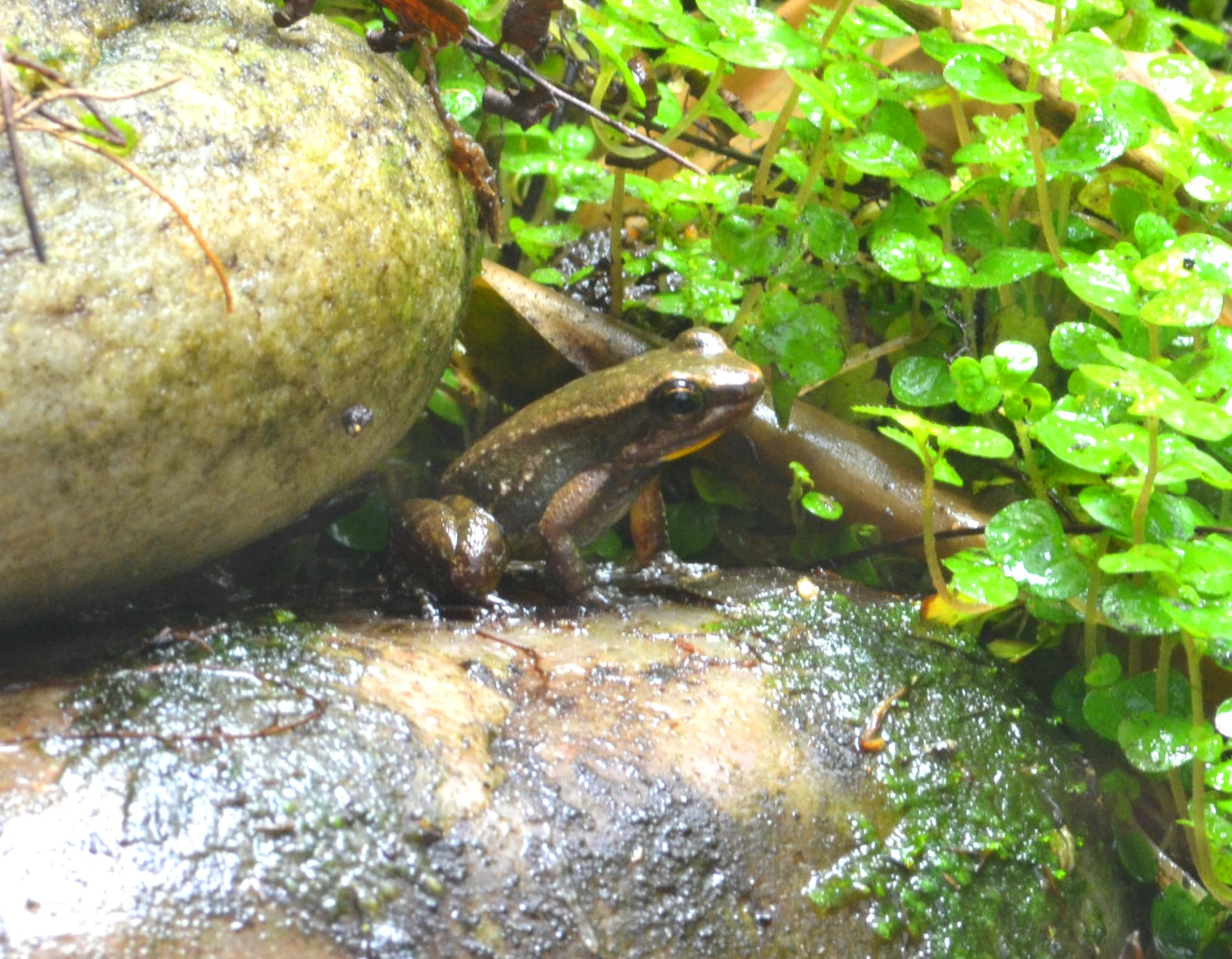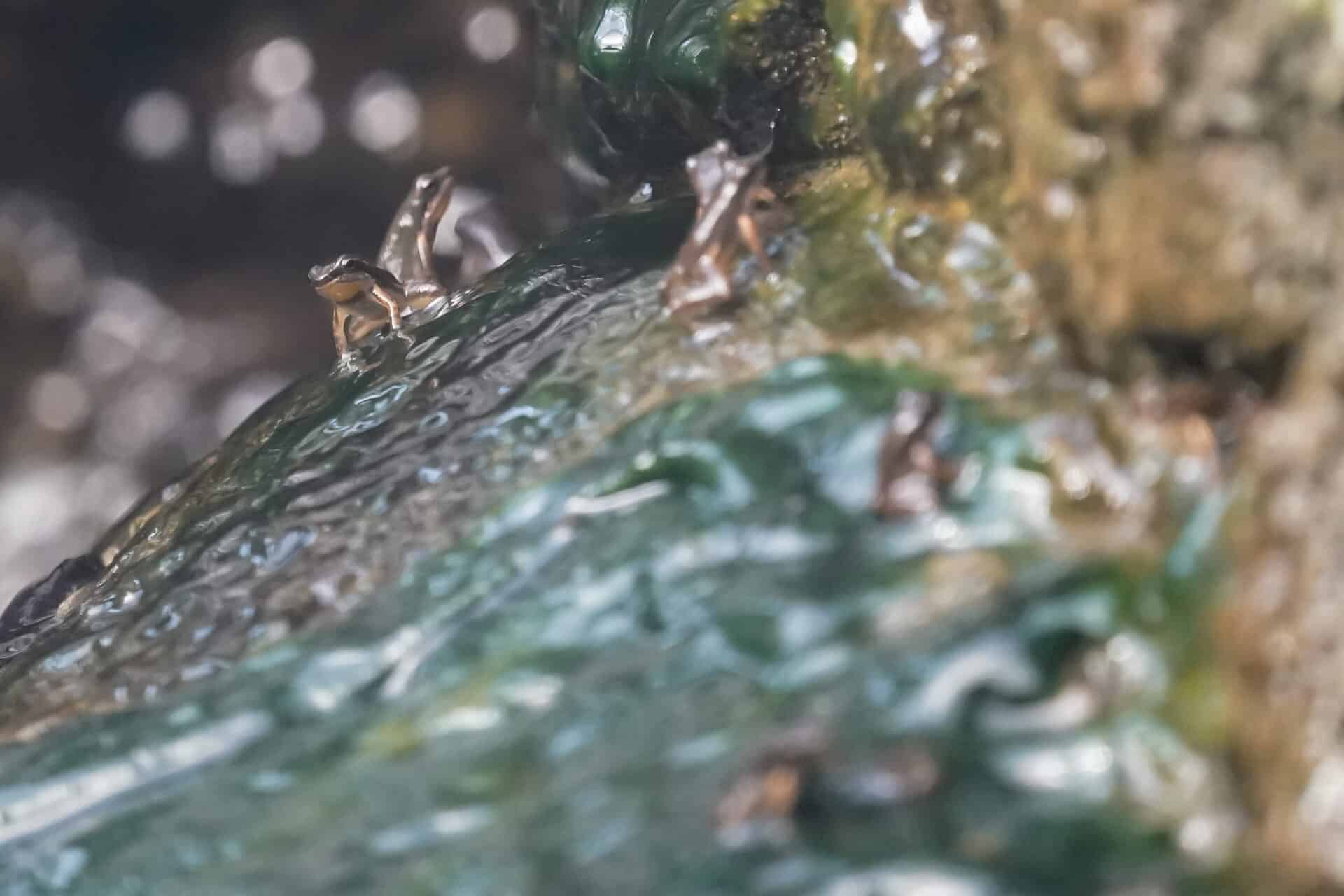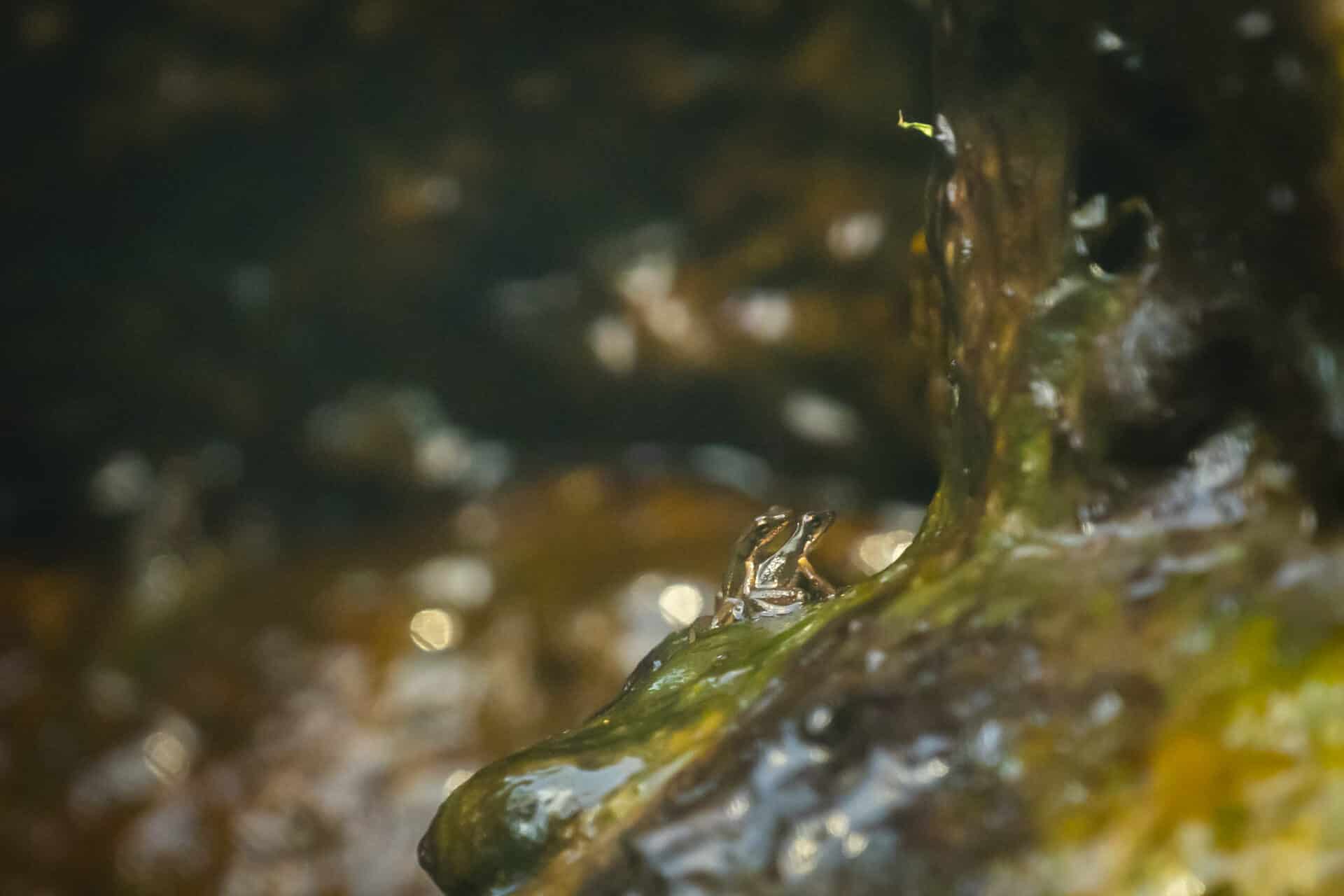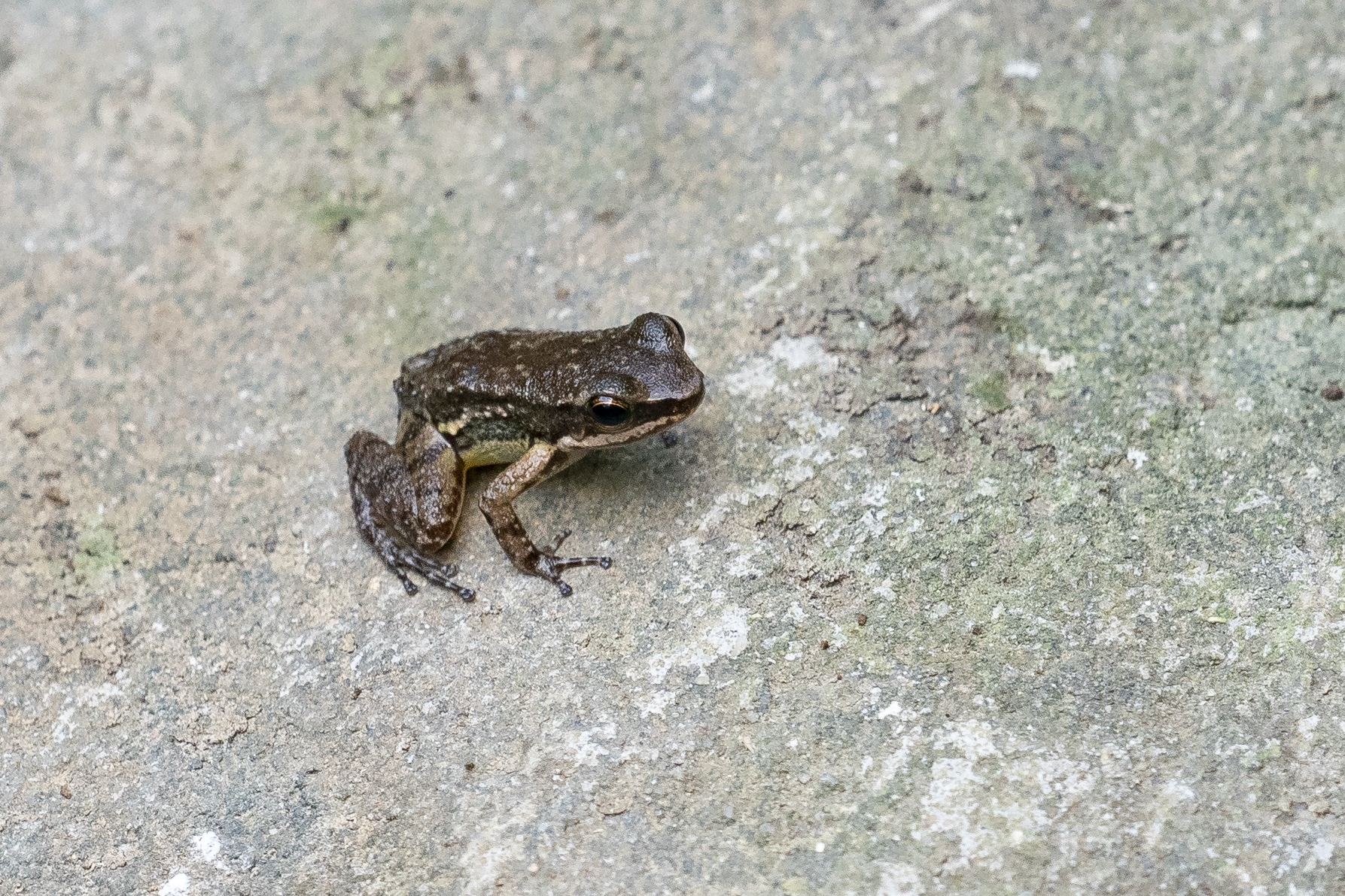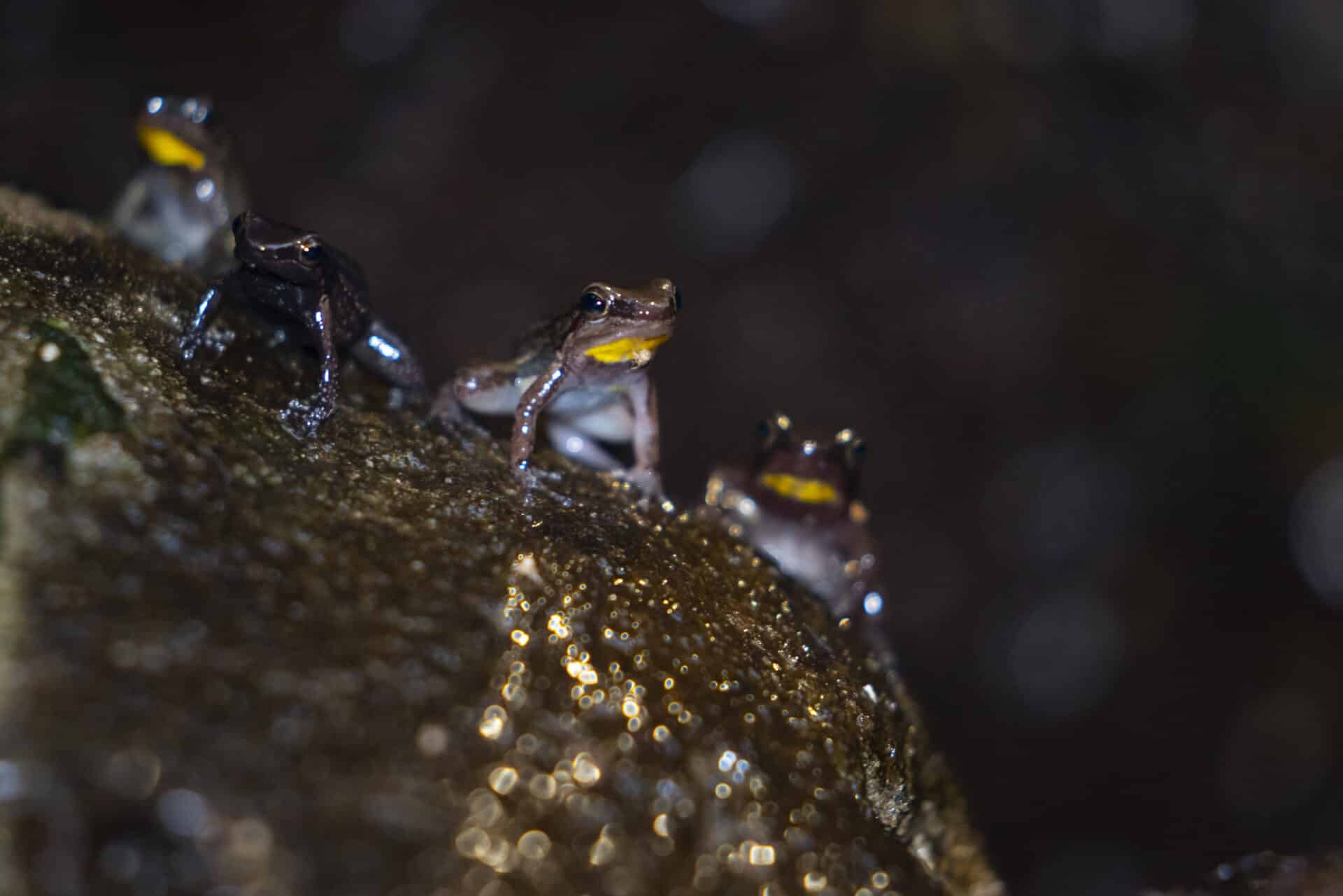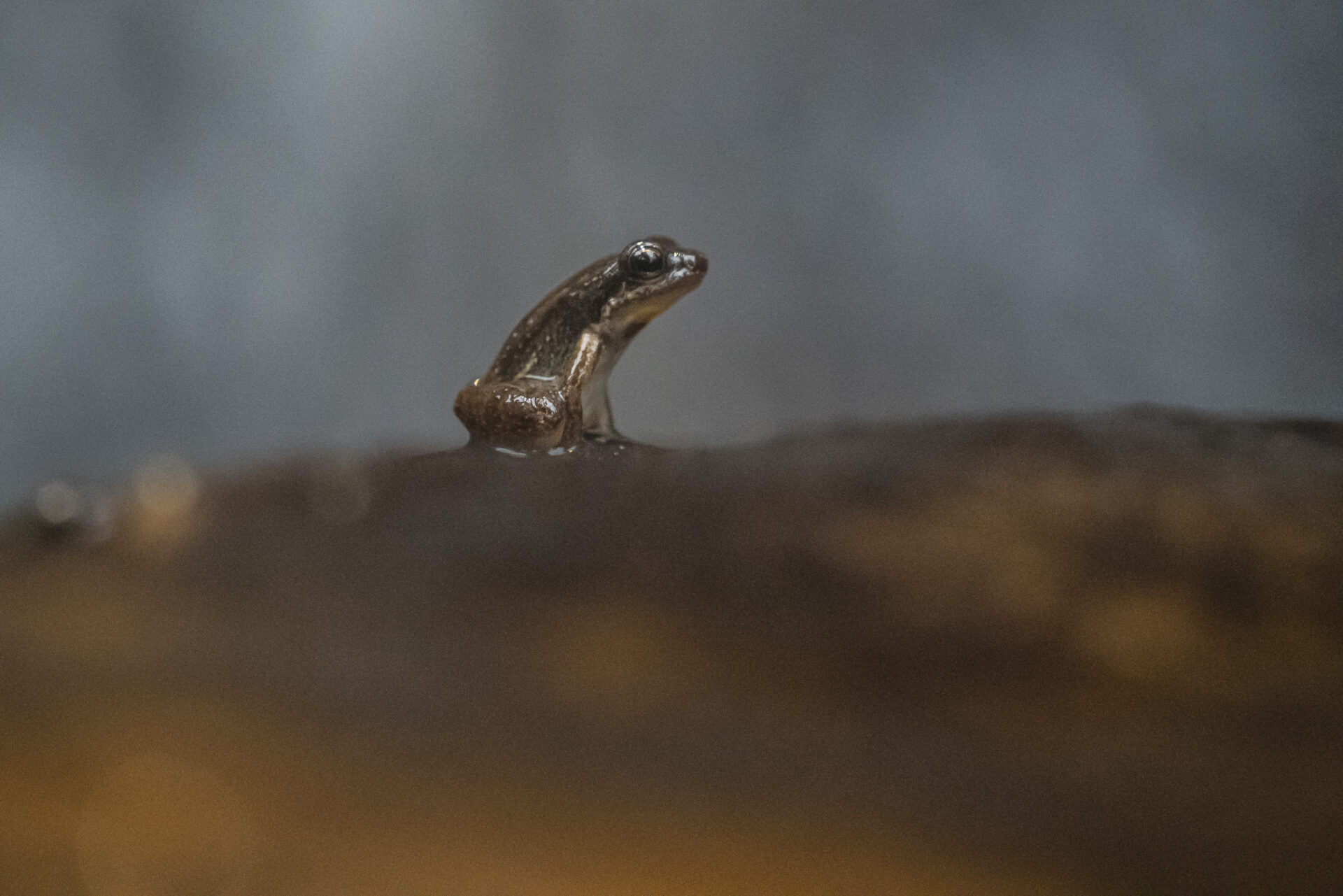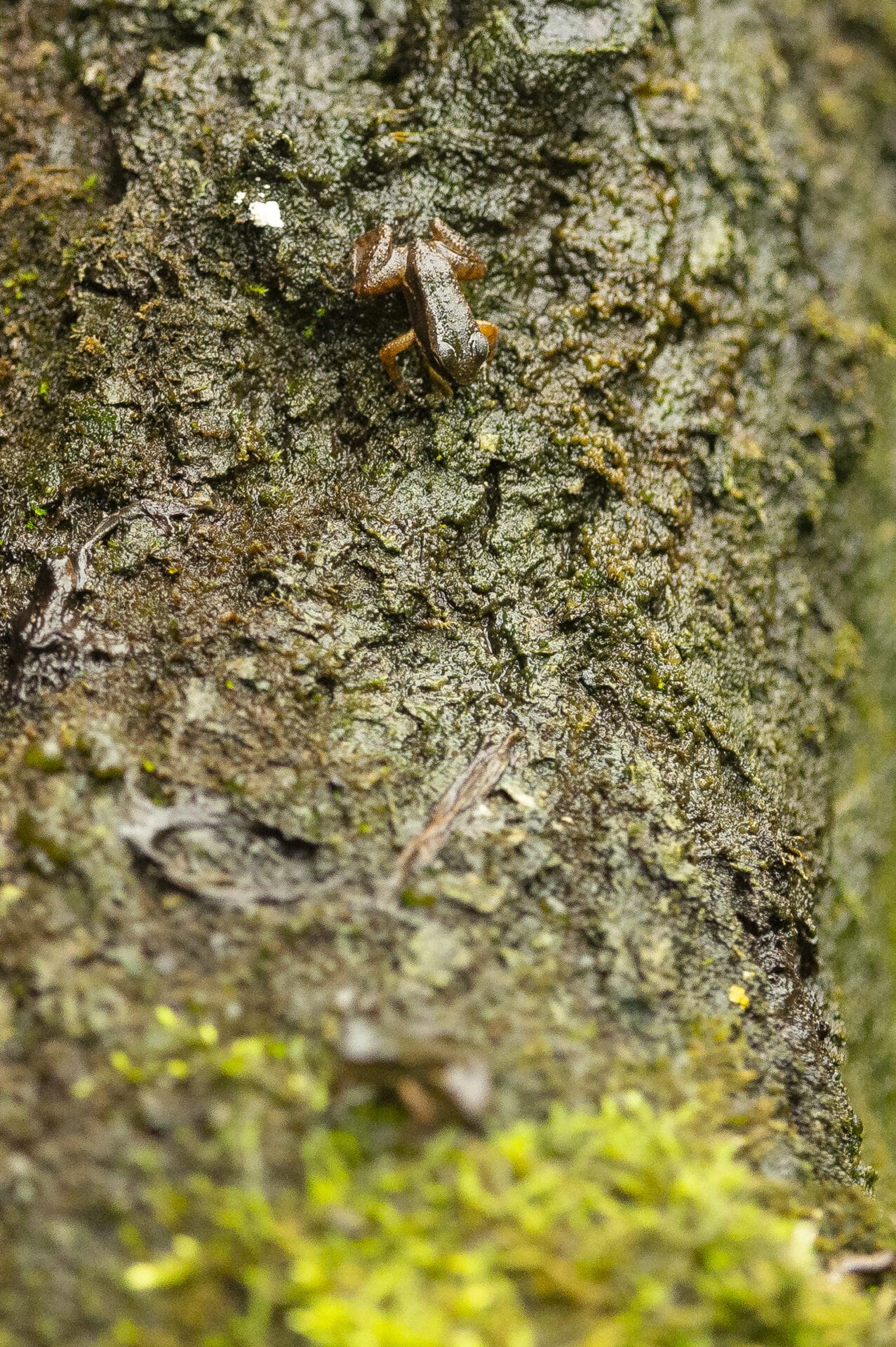Yellow-throated frog
Common Name: Yellow-throated frog
Scientific Name: Mannophryne trinitatis
Despite what their common name implies, only the female frogs are yellow-throated. The males’ throats are usually grey, turning to black when attracting a mate. Both sexes have a brown body with dark mottled sides.
Yellow-throated frogs are sometimes referred to as cryptic forest frogs or cryptic poison frogs. Yellow-throated frogs, however, are aromobatidae meaning they are less toxic than the related poison dart frog.
Fast Facts
-
Status
Least concern
-
Weight
Unknown
-
Gestation
Clutch size 2 - 12 eggs
-
Young
Eggs hatch after about 21 days, tadpoles reach metamorphosis in around 56 days.
-
Life span
Unknown
In the wild
Yellow-throated frogs mainly eat small insects found on the forest floor. Tadpoles have, however, been observed preying on their own kin.
Yellow-throated frogs are found in Northern and Central Ranges of the island of Trinidad. Thought to number in the millions in the area they are also known as Trinidad poison frogs/Trinidad stream frogs.
Adult frogs are terrestrial, usually found along shady, slow-flowing streams in mountainous, moist forests. Tadpoles are usually found in deeper water where they are protected from the flow in stream pools.
Males attract females by calling, advertising their availability by changing colour from pale brown to black. Eggs are laid in rock crevices or on leaves and it is the male who tends the eggs until they hatch. After hatching the male transports the tadpoles on his back ideally to deep stream pools. Where there is no slow-flowing water available, then wetter leaf litter can also be used.
Upon hatching tadpoles are smaller in length than adult frogs (around 1.4 – 1.6 cm). Tadpoles grow to around to around 3.7 cm when metamorphosing.
In the wild, they are predated upon by reptiles and birds. Due to their current reproduction rate, this has little impact on overall population numbers.
Although some populations occur in protected areas, there are no conservation measures in place to protect yellow-throated frogs because they are found in large numbers across their range and there are no major threats to this large stable population.
A major factor in population declines of amphibians globally is the amphibian chytrid fungus, Batrachochytrium dendrobatidis, which has been detected in 2 subpopulations of yellow-throated frogs in the wild. However, currently, the populations in Trinidad and Tobago are showing resistance to this fungus.
